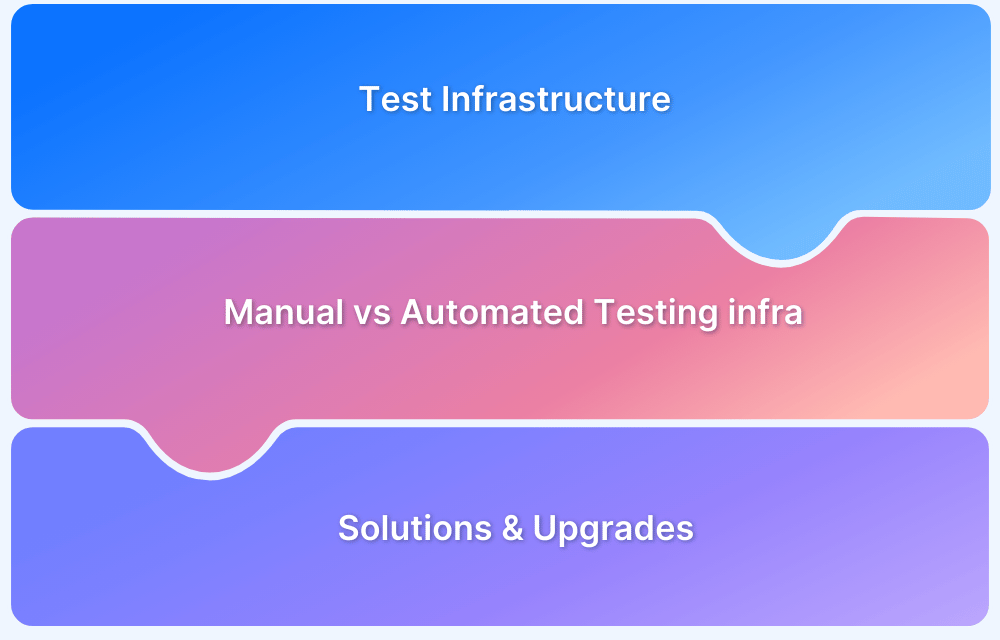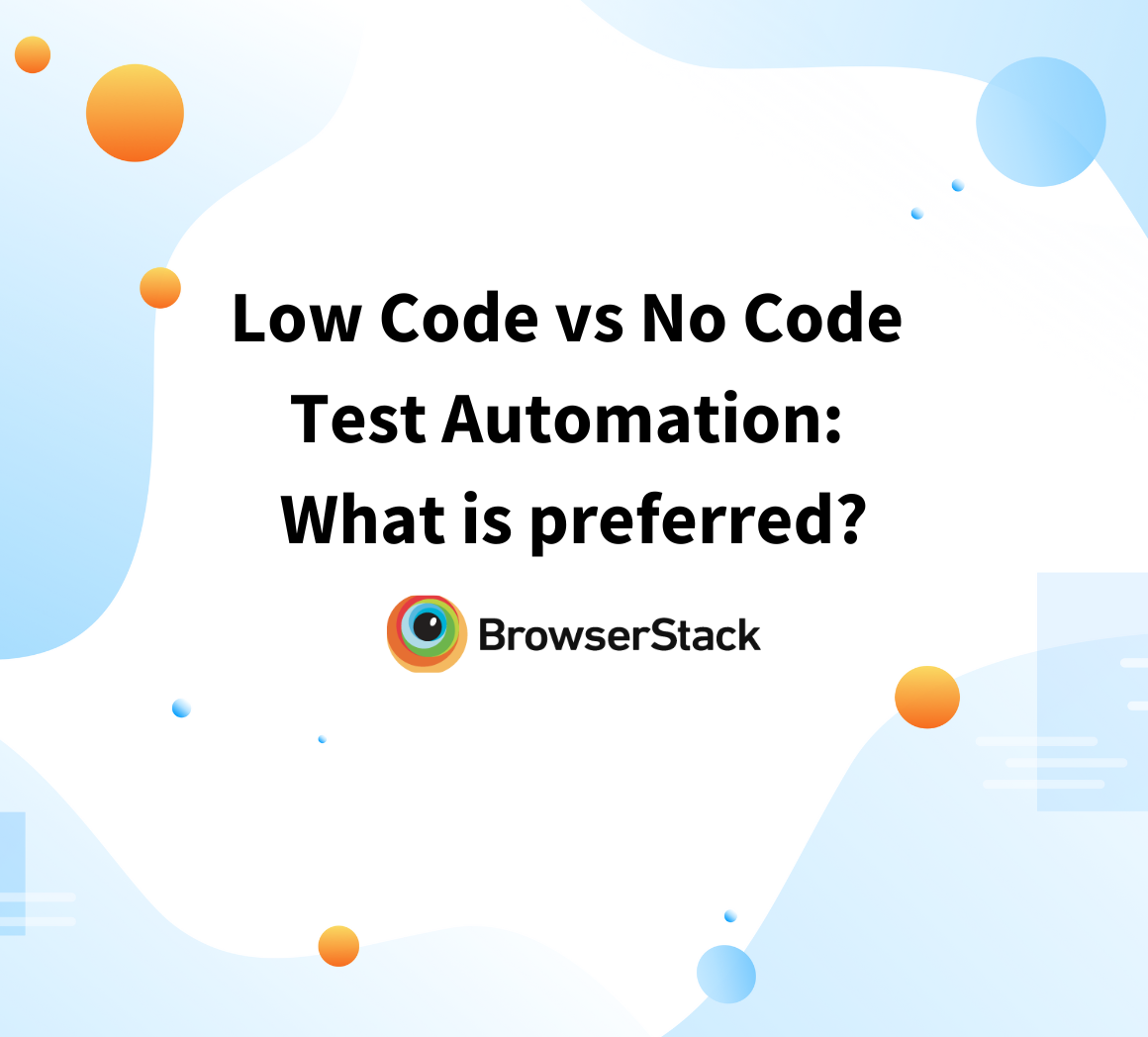Software testing became popular when computer programs became business applications. As software development has evolved with the mobile device market, software testing is also subject to constant changes.
Overall, there is a clear trend toward greater complexity in the testing process.
In this guide, you will learn how low/no-code development and testing approaches could help resolve this and other issues arising in the software development and testing industry
The Core of Testing
Software applications are nested hierarchical systems which, on the one hand, consist of text-like code instructions and, on the other hand, involve input/output using computer hardware. There are three major components in the process of using software applications, i.e., application, hardware, and user.
Developers write code according to standards and specifications defined by the technical goals. Once an application version is successfully created, it has to be appropriately integrated with the destination hardware and user. This is where the role of the application tester comes into the picture – it acts as an interface or mediator between developers and application users.
Also Read: Myths about QA Testing you need to know
Defining the role of application testers in this broad manner helps us see the continuity in the activities and also helps us evaluate how various technologies and methodologies plugin and affect the overall process.
Evolution of Testing
Software testing strategies have become increasingly complex over the years as the software itself has become more complex. Early methodologies focused primarily on functional testing. However, as software became more sophisticated, other testing types have been developed to ensure its quality, including user interface, performance, security, usability, etc.
- The advent of object-oriented programming led to the development of object-oriented testing, a more complex testing methodology than traditional functional testing. Similarly, the rise of web-based applications has led to web and web application testing development.
- Testing tools and techniques will evolve in the coming years to meet the demands of new technologies and software development paradigms.
- Open-source testing tools will continue to grow in popularity as they offer a cost-effective way to access high-quality testing tools and platforms.
- In today’s fast-paced world; businesses must release new software quickly and efficiently. As a result, testers must focus on speed and agility, ensuring new software can be removed quickly without compromising quality.
Also Read: Testing Tactics for Faster Release Cycles
As new technologies emerge, the software testing process becomes more complex because new technologies often require new testing tools and methods, which can be difficult to learn and use.
For example, Imagine UI testing a VR Game, Usability testing a hologram projector, etc. This sounds sci-fi and far-fetched, but such technologies might be closer to the market than you assume.
Importance of No Code Testing
Here are some key reasons why No Code Testing is important and why it is considered as the future of testing:
- No-code testing enables quick test creation and execution without requiring programming skills, accelerating the QA process.
- Allows business analysts, product managers, and non-developers to participate in testing, improving collaboration.
- Eliminates the need for coding expertise, freeing up developers to focus on core development tasks.
- Visual test creation reduces script maintenance, making updates and modifications easier.
- Reduces the need for specialized automation engineers, cutting down overall testing costs.
- Simplifies the creation of complex test scenarios, improving overall test coverage.
- Speeds up testing cycles, helping teams release products faster with higher confidence.
- Supports continuous testing in agile and DevOps workflows, ensuring consistent software quality.
- Automates repetitive tasks, reducing the likelihood of manual testing mistakes.
- Enables easy scaling of test automation as applications grow in complexity.
Also Read: Comprehensive Guide to Low-Code Development
Why No-code Testing is the Future
No-code testing is transforming software development by enabling teams to create and execute tests without extensive programming knowledge.
It is gaining momentum as organizations seek faster, more efficient testing solutions. By simplifying automation and reducing reliance on coding skills it enables broader teams to participate in quality assurance.
As businesses adopt agile and DevOps practices, no-code testing streamlines workflows, accelerates releases, and ensures reliable software performance.
Also Read: Low Code vs No Code Test Automation
Low/no-code vs. Traditional Development
To understand the reasons behind this shift, it is essential to examine the current developer market and the state of low/no-code compared to traditional development.
- Every device and application platform has different programming languages, frameworks, abstraction philosophies, etc. While encountering a new tool or language, developers/testers wonder whether this is a unique approach to solving the problem or a net waste of time in long-term cost-benefit analysis.
- A quality tester is basically playing a see-saw between business and tech teams. Their primary objective is to ensure that they understand what the application is supposed to do and then work with the technical team to help implement it.
- People building software products must build multiple teams to tackle different device platforms. This is expensive and leaves the product vulnerable to a non-standardized user interface because of the differences in the application platforms. Recently, a short-term solution for this problem has been the rise of cross platform application development.
- Testing modern applications requires implementing a lot of test cases, automation is the most efficient way to achieve this but to implement efficient automation, testers need to know the automation frameworks in depth. There is a learning curve for each new technology, and a developer/tester has to put in the effort to update themselves, or they slowly become obsolete.
- This usually leads to a fragmentation of the testing ecosystem into two parts; one, which is well-versed with the automation frameworks and the coding about the task; and the other, which is not so savvy and cannot understand the automation process completely.
- Every year, things are updated, so people working on these technologies have to be on their toes quite literally, as with every developer event, they have to update their skill set or they might have to face issues during production deployment of the next version.
- While there are so many complications around getting the most out of each platform, we see that it is not even a guarantee that these platforms will be around for long. Looking at the advent of AR/VR, web3, holograms, and a whole new host of new world technologies, developers are scratching their heads, thinking about whether they should continue building apps or start learning something new.
The Solution: Codeless Automation Testing Tool
The only way these corporations can get away from all these challenges is to introduce codeless automation testing tools.
No code testing or codeless test automation is a software testing approach that eliminates the need for coding to create automated tests. Testers can easily automate tests using visual models such as record and playback, drag and drop mechanisms to create and execute tests.
Traditional automation testing is complex and coding-intensive. This complexity highlights the need for professionals with coding knowledge. Low-code test automation addresses the gap between creating end-to-end tests and the need for automation testing experts.
BrowserStack’s Low Code Test Automation
BrowserStack’s Low Code Test Automation provides both cloud-based and desktop applications, enabling seamless test creation and management. This platform allows users to efficiently handle tests, test suites, and builds.
With BrowserStack Low Code Automation, you effortlessly record test steps by simply performing actions, eliminating the need for coding through Record and playback Testing.
Conclusion
No-code testing transforms software testing by making it faster, more efficient, and accessible. As software development accelerates, traditional testing methods struggle to keep up.
No-code automation streamlines testing, enabling teams to execute tests without coding expertise. With tools like BrowserStack’s Low-Code Test Automation, businesses can enhance efficiency, reduce time to market, and maintain high-quality software.






